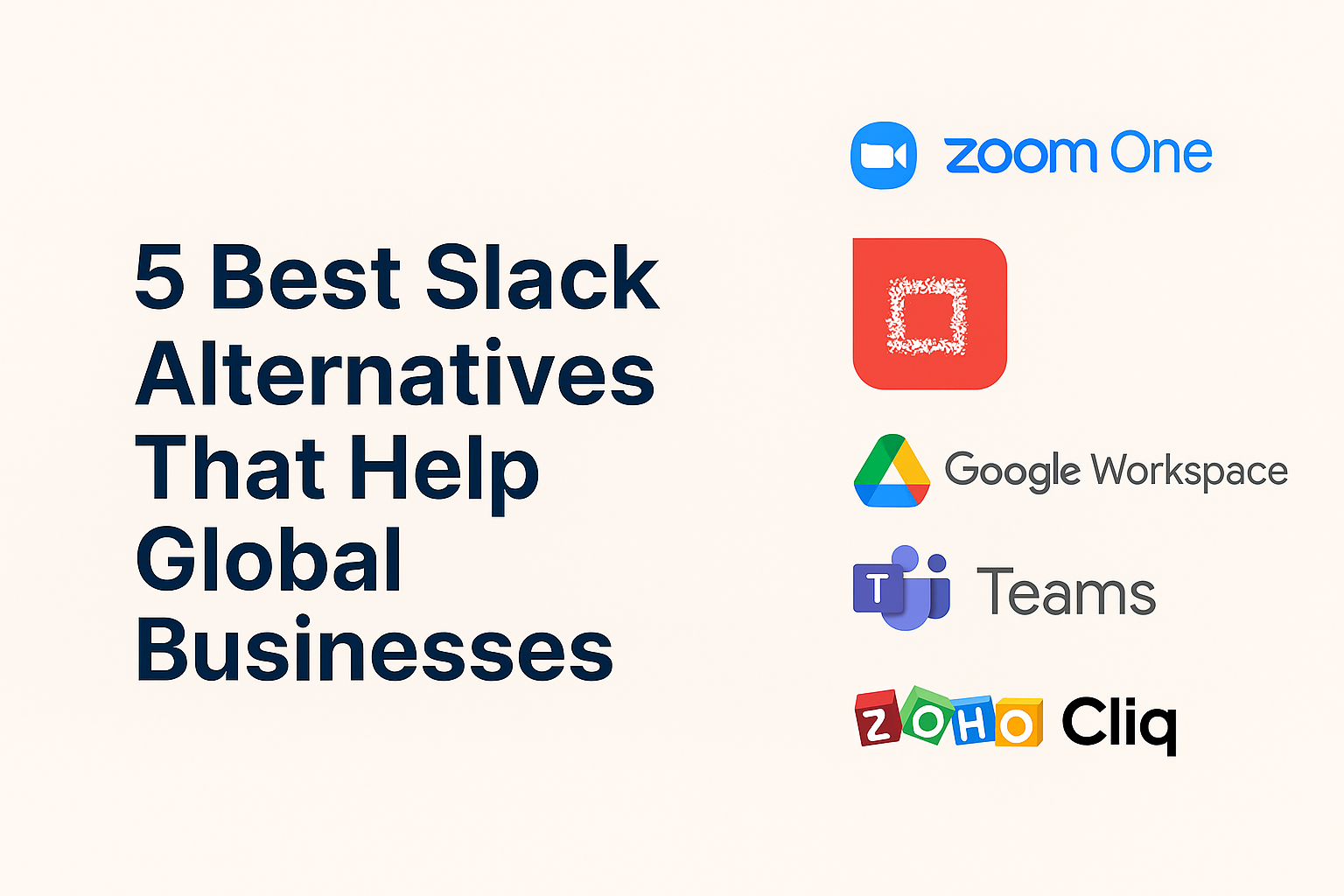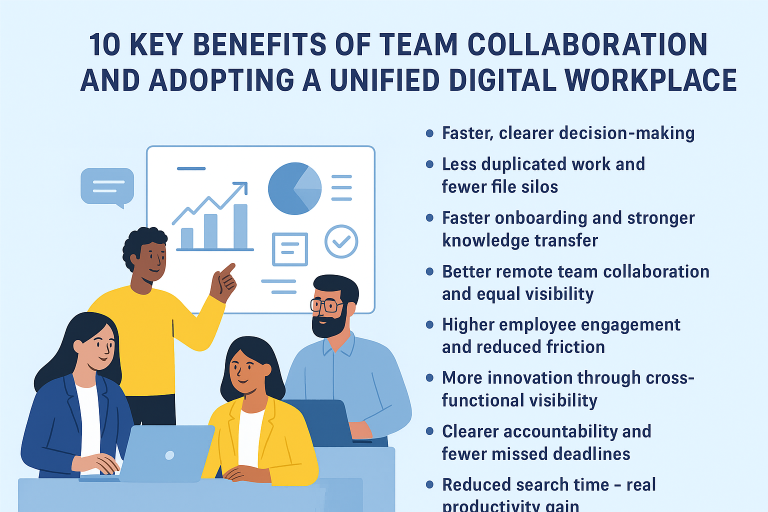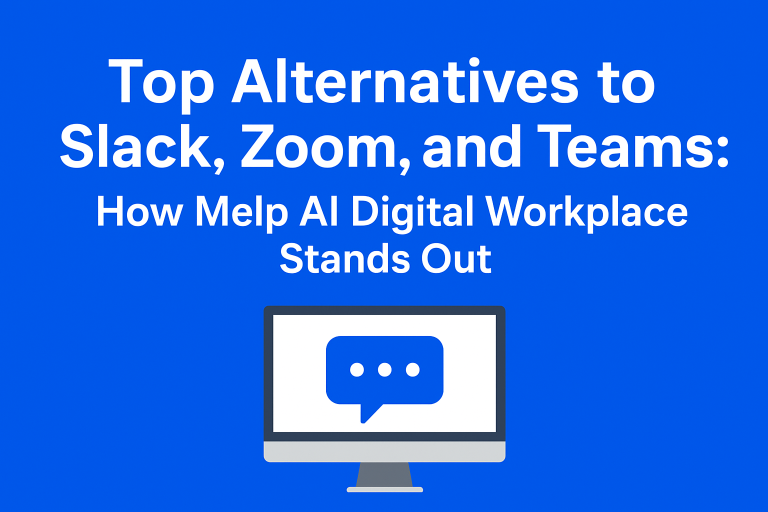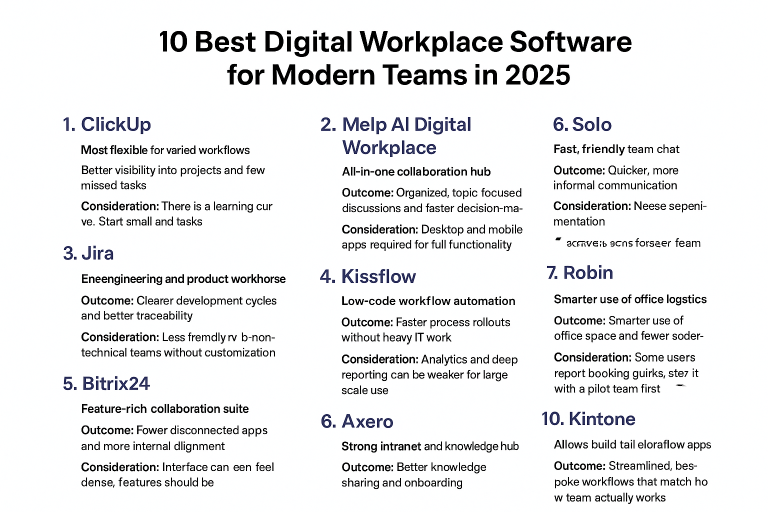Measuring the ROI of Digital Workplace Software: What Businesses Need to Know

Digital workplace software has become one of the most important investments for businesses today. Organizations are moving away from clunky, disconnected tools and are embracing platforms that bring everything into one place—messaging, video calls, file sharing, and task management. The shift is not just about keeping up with technology. It’s about unlocking real business value.
But here’s the challenge: leaders often ask the same question—how do we actually measure the return on investment (ROI) of digital workplace software? The benefits feel obvious, yet proving them in dollars and percentages isn’t always simple.
Let’s break it down in a way that makes sense for business leaders.
What Is ROI in Digital Workplace Software?
At its core, ROI is about understanding whether the money you’re putting into software is paying you back in measurable business outcomes. With digital workplace platforms, this usually means:
- How much time are your employees saving?
- Are teams collaborating more efficiently?
- Are operational costs going down?
- Is employee retention improving?
The tricky part is that not every benefit is immediately visible. Sure, you can count reduced travel costs or fewer hours spent in meetings. But how do you put a dollar amount on a happier employee who stays with your company longer? Or a faster decision that keeps a project on track?
That’s why many companies struggle. ROI in digital workplace software is both tangible (time saved, costs reduced) and intangible (better culture, stronger collaboration). The smartest leaders measure both.
Key ROI Metrics Businesses Should Track
If you want to evaluate ROI properly, start with these core metrics:
1. Productivity Gains
This is the easiest to spot. Digital workplace software reduces time wasted in email chains and endless meetings. When a team can instantly share updates in Slack or Melp App, hours are saved each week.
2. Employee Engagement
Engaged employees deliver better work. Tools that provide a smoother experience—like real-time chat, video calls, and document collaboration—help employees feel connected, even in remote settings.
3. Cost Savings
Think about reduced business travel, fewer physical office needs, and lower meeting overhead. For companies shifting to hybrid or remote-first models, this is a major source of ROI.
4. Collaboration Efficiency
Digital workplace platforms allow teams to work across time zones and departments without friction. When employees don’t have to chase information or wait on replies, projects move faster. This is where team collaboration software becomes a real driver of ROI—it brings messaging, file sharing, task management, and video calls into one hub. Instead of juggling multiple apps, employees can stay aligned in a single space, which reduces delays and keeps workflows on track.
5. Employee Retention
Happy employees stay longer. Replacing a worker can cost 1.5–2 times their annual salary. If workplace software makes daily tasks less frustrating, it directly lowers turnover costs.
Supporting Data
These aren’t just ideas—they’re backed by hard data.
According to a report by McKinsey, companies that use effective collaboration tools can improve productivity by 20–30%. That’s like giving your employees an extra workday every week without increasing salaries.
Source: McKinsey – The social economy.
That kind of gain translates into serious ROI for any business.
Real-World Example
Let’s make this real.
A mid-sized consulting firm with 400 employees was struggling with email overload and unproductive meetings. Project updates often got lost in long threads, and client deliverables were slipping past deadlines.
The leadership team decided to roll out Slack for messaging, Melp App as their all-in-one digital workplace software, and Zoom for client calls. Within six months, here’s what happened:
- Email volume dropped by 35%, freeing up more time for actual work.
- Average project turnaround time improved by 20%, which boosted client satisfaction.
- Employees reported saving about 4–5 hours per week by using integrated communication and file-sharing features.
- Turnover decreased slightly, with several exit interviews noting that the new tools made work “far less stressful.”
When they calculated the financial impact, the company estimated nearly $2.5 million in annual productivity savings compared to just under $400,000 in software costs. That’s a healthy ROI by any standard.
The Top Digital Workplace Software to Know
Not every platform delivers the same ROI. Here are five of the most effective solutions companies turn to:
Slack
A channel-based messaging platform that keeps conversations organized. Slack reduces email overload and supports integrations with hundreds of other apps, making workflows faster.
ROI Benefit: Cuts down on wasted communication time and improves transparency.
Melp App
An all-in-one digital workplace software built for modern teams. It offers messaging, video calls, file sharing, task management, and even real-time translation features for global collaboration.
ROI Benefit: Centralizes everything in one platform, reducing the need for multiple tools and cutting costs.
Microsoft Teams
Part of the Microsoft ecosystem, Teams integrates seamlessly with Office 365. It combines chat, meetings, and file storage.
ROI Benefit: Strong adoption in enterprises already using Microsoft products, saving integration headaches.
Lark
A newer digital workplace platform that combines messaging, video meetings, cloud documents, and calendar features.
ROI Benefit: Eliminates the need for separate tools by packaging communication and collaboration in one system.
Zoom
Primarily known for video conferencing, Zoom remains the standard for remote and hybrid meetings.
ROI Benefit: Improves client engagement and team communication, especially for global organizations.
Challenges in Measuring ROI
Even with clear benefits, many businesses stumble when it comes to proving ROI. Here’s why:
- Intangible Benefits: It’s difficult to measure culture improvements or morale in dollars.
- Adoption Gaps: If employees resist using the tools, ROI drops quickly.
- Integration Issues: If the software doesn’t connect smoothly with existing systems, it creates friction instead of reducing it.
- Time Horizon: Leaders often expect immediate returns, but the biggest ROI shows up after consistent adoption over months or years.
Step-by-Step Guide to Measuring ROI
If you want to calculate ROI realistically, follow these steps:
- Define Your Goals
Decide what you’re trying to achieve. Do you want faster project delivery? Lower email volume? Reduced travel costs? - Track Current Baselines
Measure where you stand today—average email volume, meeting hours, turnover rates, project timelines. - Implement the Software
Roll out your chosen digital workplace platform (or combination). For many companies, Melp App is a strong all-in-one option to reduce tool sprawl. - Measure the Impact
Track the same metrics 3, 6, and 12 months later. Compare them to your baselines. - Calculate ROI
Use the formula:
ROI = (Net Benefits ÷ Costs) × 100 - Adjust and Scale
If adoption is low, invest in training. If one feature isn’t used, explore whether it’s needed. ROI improves as usage becomes ingrained in daily workflows.
Conclusion
Measuring the ROI of digital workplace software is about more than numbers—it’s about proving that your investment is helping teams work better, faster, and happier. While some benefits are easy to measure, others require looking beyond the spreadsheets to employee engagement and long-term retention.
The reality is simple: businesses that align their software investments with clear goals and track real outcomes see undeniable returns. Whether it’s Slack, Melp App, Teams, Lark, or Zoom, the key is to choose platforms that fit your culture, drive adoption, and keep measuring results.
Start small, track what matters, and scale as the value becomes clear. In today’s fast-moving world, understanding and proving ROI isn’t optional—it’s the difference between software that drains budgets and software that drives real growth.






